China Has Officially Started Construction on the World’s First “Forest City”
The world’s first “Forest City,” designed to fight pollution and climate change, is under construction in China. Covered in greenery and trees, it will absorb nearly 10,000 tons of CO2 and 57 tons of pollutants yearly, and produce 900 tons of oxygen.
[edit] FUTURISTIC GREEN CITY
The world’s first “Forest City,” created to fight pollution, is now under construction in Liuzhou, Guangxi Province, China. Designed by Stefano Boeri Architetti, a team that develops green projects all around the world, the futuristic Forest City will be home to a community of about 30,000 people. It will be covered in greenery, including nearly 1 million plants of more than 100 species and 40,000 trees that together absorb almost 10,000 tons of carbon dioxide and 57 tons of pollutants, and produce approximately 900 tons of oxygen annually. As a result, Forest City will help to decrease the average air temperature, improve local air quality, create noise barriers, generate habitats, and improve local biodiversity in the region.
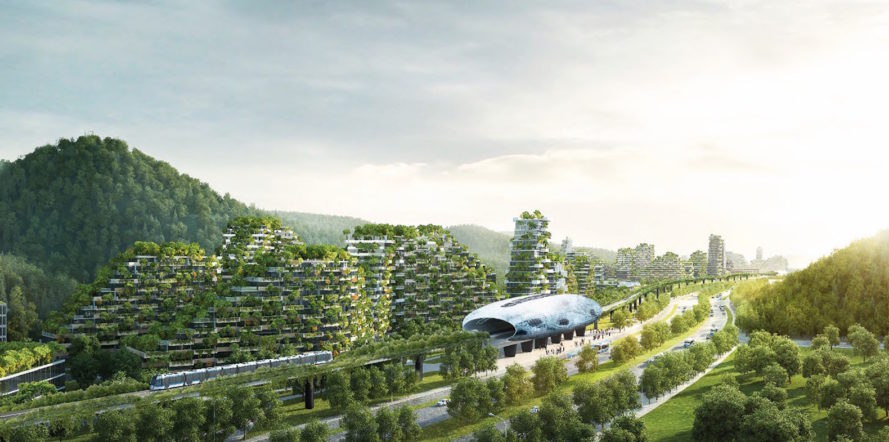 Image Credit: Stefano Boeri Architetti
Image Credit: Stefano Boeri Architetti 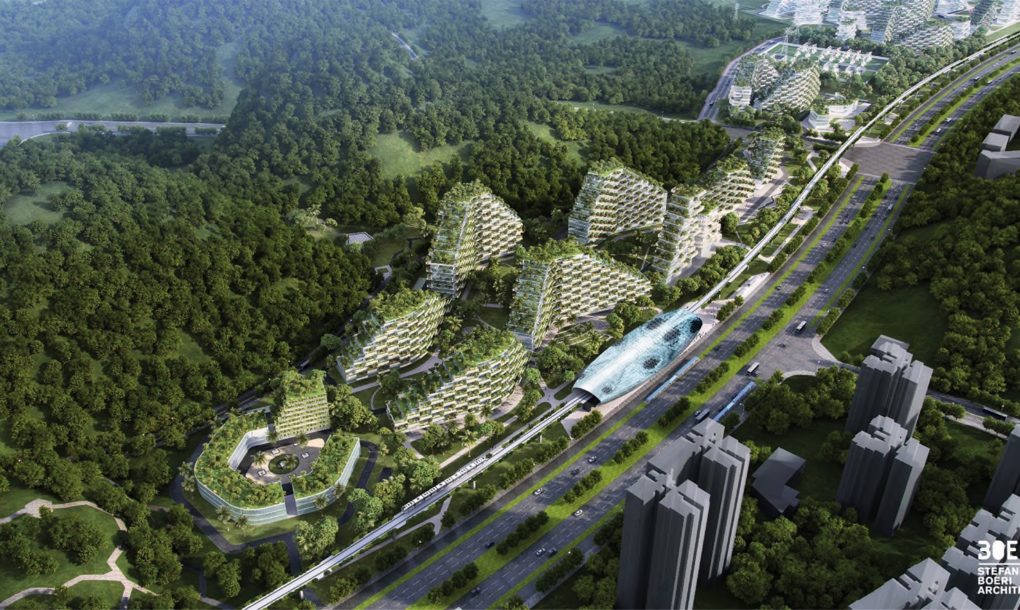 Image Credit: Stefano Boeri Architetti
Image Credit: Stefano Boeri Architetti
Liuzhou Forest City will be self-sufficient, running on renewable energy sources such as geothermal and solar energy. The city will also be entirely wired, and will include commercial zones, residential areas, recreational spaces, a hospital, and two schools. Forest City will be connected to Liuzhou by a fast rail line for electric cars.
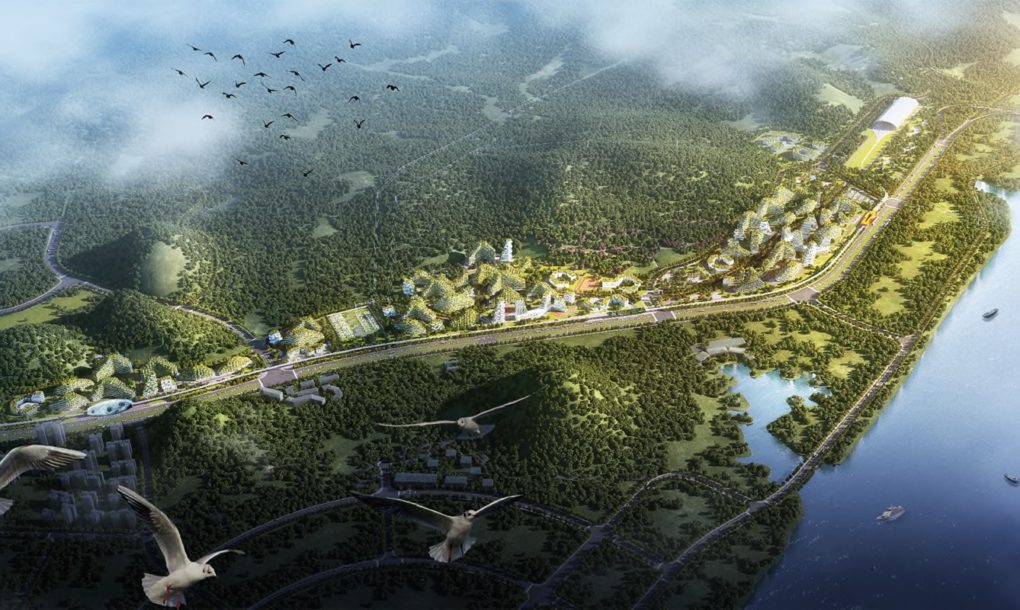 Image Credit: Stefano Boeri Architetti
Image Credit: Stefano Boeri Architetti 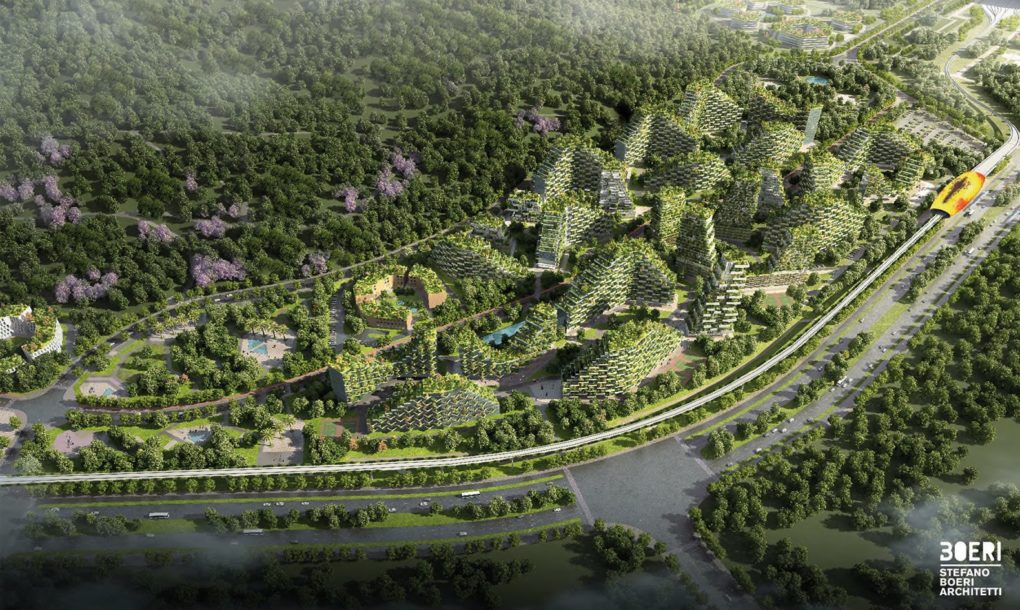 Image Credit: Stefano Boeri Architetti
Image Credit: Stefano Boeri Architetti
Liuzhou Municipality Urban Planning commissioned the design for the 175-hectare Liuzhou Forest City which will be situated along the Liujiang River in the northern part of Liuzhou. The project has a high profile in China and, if it succeeds, it will set an example for green city design elsewhere in the country and around the world. The project is planned to be complete sometime in 2020.
 Image Credit: Stefano Boeri Architetti
Image Credit: Stefano Boeri Architetti 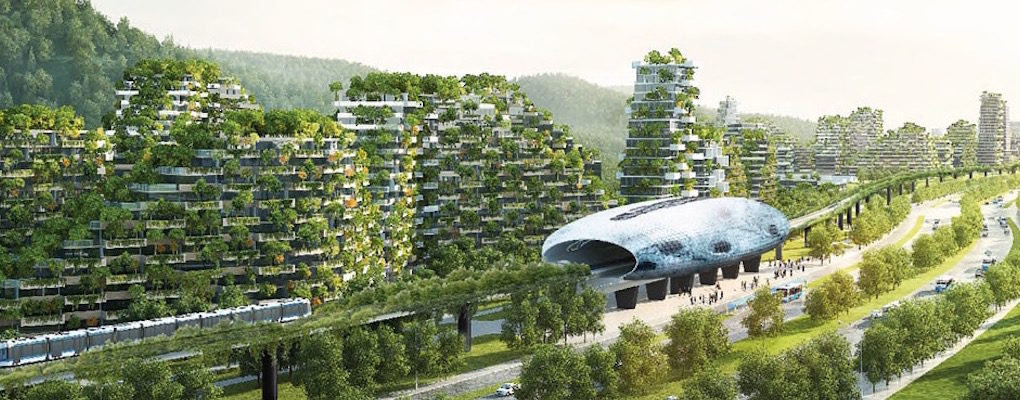 Image Credit: Stefano Boeri Architetti
Image Credit: Stefano Boeri Architetti
References: Inhabitat, Stefano Boeri Architetti
Written by Karla Lant, freelance writer, journalist, editor, Futurism
Please find the original article here .
--Future of Construction 10:15, 30 Aug 2017 (BST)
Featured articles and news
Infrastructure that connect the physical and digital domains.
Harnessing robotics and AI in challenging environments
The key to nuclear decommissioning and fusion engineering.
BSRIA announces Lisa Ashworth as new CEO
Tasked with furthering BSRIA’s impressive growth ambitions.
Public buildings get half a million energy efficiency boost
£557 million to switch to cleaner heating and save on energy.
CIOB launches pre-election manifesto
Outlining potential future policies for the next government.
Grenfell Tower Inquiry announcement
Phase 2 hearings come to a close and the final report due in September.
Progress from Parts L, F and O: A whitepaper, one year on.
A replicated study to understand the opinion of practitioners.
ECA announces new president 2024
Electrical engineer and business leader Stuart Smith.
A distinct type of countryside that should be celebrated.
Should Part O be extended to existing buildings?
EAC brands heatwave adaptation a missed opportunity.
Definition of Statutory in workplace and facilities management
Established by IWFM, BESA, CIBSE and BSRIA.
Tackling the transition from traditional heating systems
59% lack the necessary information and confidence to switch.
The general election and the construction industry
As PM, Rishi Sunak announces July 4 date for an election.
Eco apprenticeships continue help grow green workforce
A year after being recognised at the King's coronation.
Permitted development rights for agricultural buildings
The changes coming into effect as of May 21, 2024.








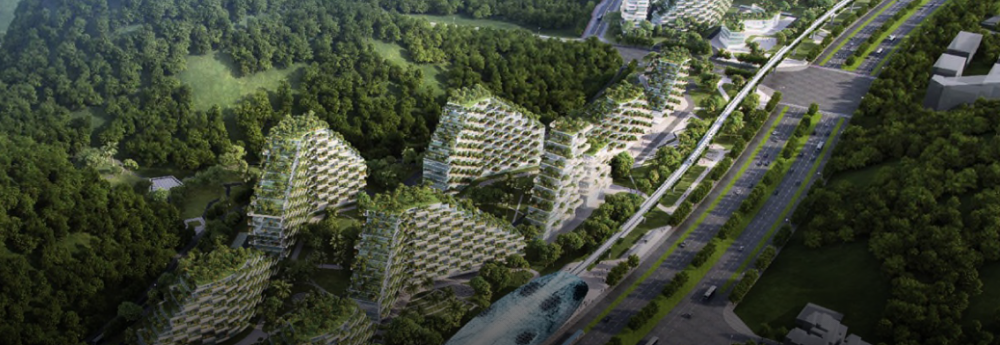















Comments
As of my last knowledge update in September 2021, China had announced plans for several ambitious eco-friendly projects, including the concept of a "Forest City." However, I don't have access to real-time information, so I cannot confirm events or developments that have occurred after that date.
If China has indeed started construction on the world's first "Forest City," it would be a significant step toward creating more sustainable urban environments. The concept of a Forest City involves designing and building a city that incorporates abundant greenery, trees, and vegetation into its infrastructure to improve air quality, reduce pollution, provide natural habitats, and enhance the overall quality of life for residents.
It's worth noting that such projects often involve complex planning, engineering, and environmental considerations. The success of a Forest City project depends on factors such as urban planning, design, sustainability initiatives, and the integration of green technologies.
If you're looking for up-to-date information about the progress of China's Forest City project, I recommend checking news sources, official government announcements, and reliable architectural and environmental websites.